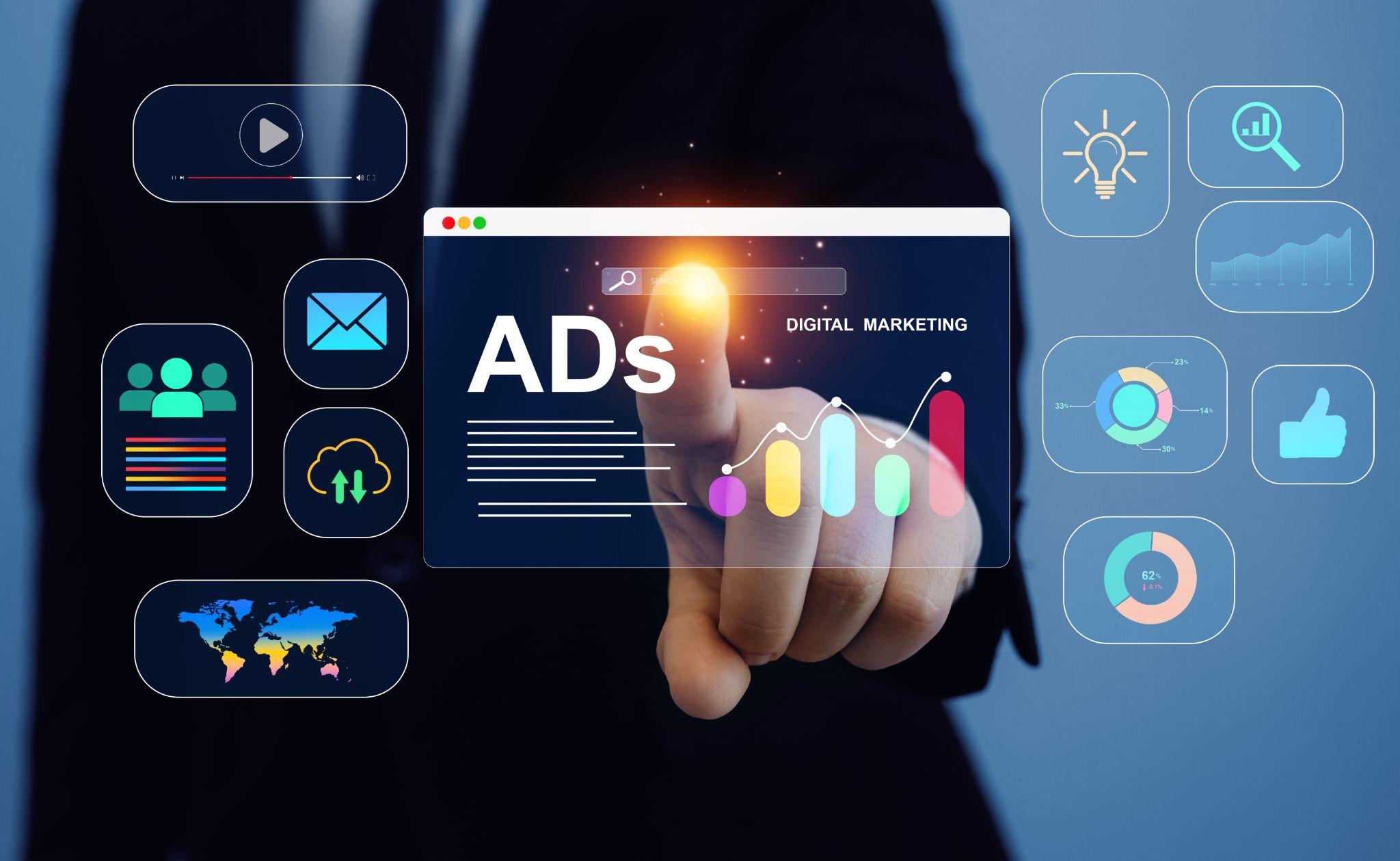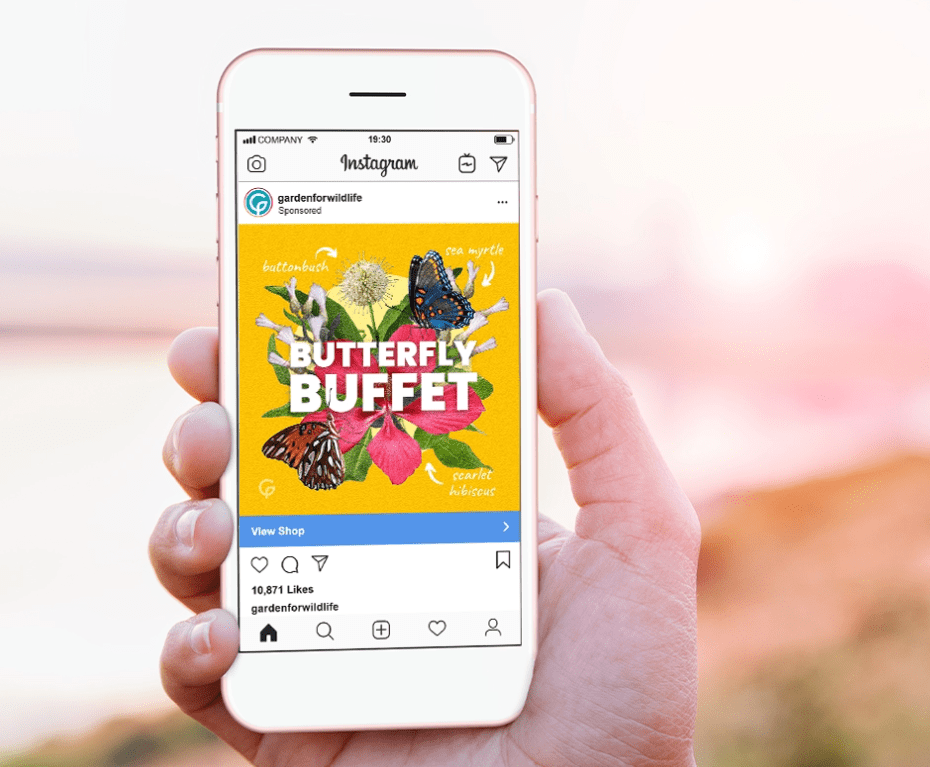
Social media platforms have undergone a tectonic shift in the past few years. To stand out and drive real results, your paid social media strategy needs to go beyond clicks and impressions—it needs to feel authentic.
The good news is that brands aren’t limited to one-size-fits-all paid social ads anymore. With personalized targeting and creative formats, ads just feel more authentic today. But you need to know how to advertise on social media and what works.
Ahead, our expert paid social marketing team dives into how you can use paid social media marketing to boost brand awareness, drive traffic and leads, and get better results with paid social ads.
Paid social media marketing is exactly what it sounds like: you pay to promote your content on social platforms.
Instead of relying solely on organic reach—like when someone sees your post because they follow you or a friend shares it—you’re putting money behind your message to get it in front of the right people. That means more visibility, more traffic, and—when done well—more conversions.
When you run paid social media campaigns, you choose your audience based on detailed targeting options. You can narrow it down by age, gender, location, interests, behaviors—even life events.
For example, if you sell fitness gear, you might target people aged 25–40 who follow health influencers, shop for workout equipment, or recently joined a gym. Platforms like Facebook, Instagram, TikTok, LinkedIn, Pinterest, and X offer robust ad tools that let you customize and control exactly who sees your message.
You also decide what kind of paid social ads you want to run. It could be a single image, a carousel of products, a short video, or a story ad with a swipe-up link. You can promote a specific offer, drive traffic to your website, grow your following, or boost engagement on a post. Whatever your goal is, there’s an ad format designed to help you reach it.
The beauty of paid social is that it’s measurable. You’re not guessing. You can see what’s working and what’s not—down to the click. And with real-time data, you can tweak your campaigns on the fly to maximize results.
To build a strong presence on social media, it’s important to understand the difference between organic and paid strategies but also how they work together.
Together, organic and paid strategies build a powerful presence that grows your brand and drives real impact.
Also keep in mind that you can boost your well-performing organic posts to reach a wider audience. This turns your high-performing content into a paid ad, helping you extend its impact without creating something new from scratch. It’s a smart way to build on what’s already resonating.

Paid social media campaigns give you full control over your reach, message, and performance.
This powerful, strategic tool helps you meet your business goals faster and more efficiently.
Here are some of the benefits:
When you use paid social media marketing strategically, you not only reach more people, you reach the right people. That’s what turns attention into action and drives real business growth.
Choosing the right ad format is key to meeting your campaign goals. Different types of social media ads serve different purposes—from building brand awareness to driving conversions. Here’s a breakdown of the most common formats and how you can use them effectively:
Image ads are simple, static visuals paired with a short caption and a call-to-action (CTA). They’re great for building brand awareness, promoting a product, or sharing a special offer. A high-quality image and a clear message can stop the scroll and capture attention quickly. Use image ads when you want to make a bold, focused statement without overwhelming your audience.
These paid social ads let you showcase multiple images or videos in a single ad unit that users can swipe through. They’re perfect for telling a story, highlighting different product features, or showing a product from multiple angles. You can even use them to create a step-by-step walkthrough or compare options. If video is not available for your campaigns, carousels allow you an engaging, storytelling asset while utilizing the content you already have.
Video ads are highly engaging and ideal for storytelling, demonstrating how a product works, or building emotional connections with your audience. You can use short videos (under 15 seconds) for quick impact or longer videos for deeper brand storytelling. Platforms like TikTok, Instagram Reels, and YouTube thrive on video content, making this format great for driving both awareness and consideration. Keep the first few seconds strong—attention spans are short.

These ads appear in the full-screen, vertical format used in Instagram Stories, Facebook Stories, and Snapchat. They’re immersive, time-sensitive, and ideal for creating a sense of urgency or exclusivity. Use them for flash sales, new arrivals, or limited-time promotions. Because they blend in with organic content, they can feel more native and less disruptive—if designed thoughtfully.
Short-form video ads, like Instagram Reels or TikTok-style videos, are designed to feel casual, entertaining, and native to the platform. They’re great for reaching younger audiences, participating in trends, or showing your brand’s personality. These ads often perform well with sound-on experiences and work best when they mirror the style of organic content. If you want to spark shares, save-worthy content, or viral potential, short-form is the way to go.
Collection ads combine images or videos with a product catalog, allowing users to browse and shop without leaving the platform. These are great for e-commerce brands looking to drive product discovery and streamline the path to purchase. They open into an immersive instant experience, keeping users engaged while moving them closer to conversion. If your goal is sales or product exploration, this format delivers.
Lead ads are built to capture user information—like email addresses, phone numbers, or sign-ups—directly within the platform. They’re ideal for growing your newsletter list, promoting a free download, or gathering inquiries without sending users to an external landing page. These ads remove friction from the process, making it easier for people to express interest on the spot.
To build a strong paid social strategy you need a clear roadmap to make sure every dollar you spend moves you closer to your goals. Whether you’re launching your first campaign or refining your existing efforts, here’s a simple step-by-step guide to get started:
Start by identifying what success looks like. Are you trying to increase website traffic, generate leads, drive sales, or grow brand awareness? Your goal will shape every part of your strategy—from ad format to targeting to budget.
Understand who you’re trying to reach. Go beyond basic demographics and dig into interests, behaviors, and pain points. The better you know your audience, the more relevant—and effective—your ads will be.
Not every social platform will be the right fit for your brand. Pick the ones where your audience spends their time and where your content will perform best. Instagram might be great for lifestyle products, while LinkedIn could be more effective for B2B services.
Choose ad formats that align with both your message and your audience. Use video ads to tell your story, carousel ads to showcase multiple products, or lead ads to collect sign-ups. Match the format to the action you want users to take.
Your visuals and messaging need to stop the scroll. Use eye-catching design, clear copy, and a strong call to action. Keep your brand voice consistent, but tailor your message to each platform. Partner with a paid social advertising agency if you need help.
Decide how much you want to spend and how you’ll allocate your budget across platforms, audiences, and goals. Choose between automated bidding or manual control based on your experience and objectives.
Once your campaign is live, track performance closely. Test different creatives, tweak your targeting, and adjust your budget as needed. Paid social is dynamic—what works today might need refining tomorrow.

Tracking the right KPIs helps you measure performance, make smart optimizations, and get the most out of your ad spend. Here are the key metrics to keep an eye on:
Watch these KPIs closely to stay agile, make informed decisions, and drive stronger results over time.
These paid social media best practices can help you stay ahead of the curve.
We mentioned KPIs earlier, but it bears repeating. When conceptualizing a campaign, it is crucial to determine which metrics you want to optimize for and how you are going to measure success. A campaign should always have a primary and a secondary KPI, and these metrics should not be what we would consider vanity metrics.
Examples of metrics to use as KPIs are: Purchases, Purchase Conversion Value, Return on Investment (ROI), Landing Page Views, and Link Click Through Rate (LCTR).
When measuring the success of a campaign, remember what your KPI is set at. For example, if your sales objective campaign is driving a high CTR but a below-benchmark ROAS, this is an opportunity for optimization.
The most important tool a marketer has when utilizing performance social media marketing is the campaign data. When setting up a campaign, you must ensure your data is trackable, ideally through multiple sources.
An example of a properly set-up campaign with the ability to track would be a Facebook campaign with UTMs added as well as utilizing a Facebook pixel. This will allow you to compare and contrast data from Facebook and Google when making decisions on what to optimize.
A key component of successful performance social media marketing is constant testing. Putting a clear testing plan in place to compare areas such as creative, copy, audiences, and placements is critical to ensure your campaigns are performing to the best of their ability.

Performance social media marketing is essentially paid social that is optimized for a desired outcome. It allows a business to run campaigns that are not only strategic but also heavily focused on return on investment (ROI).
When considering objectives for paid social campaigns, brands are typically optimizing for likes, engagements, landing page views, app installs, and purchases.
While digital marketing is a form of advertising that uses online channels, performance social media marketing is a type of digital marketing that utilizes paid advertising on social media. With performance social media marketing, you only pay when the desired outcome occurs.
For example, when a business runs a Facebook campaign with the objective of driving catalog sales, they’re ultimately running a performance social media marketing campaign.
If you’re looking to improve your brand’s advertising efforts and drive more qualified leads, you need a solid paid social media strategy. Get in touch with our paid social advertising agency today to find out how our team can help!